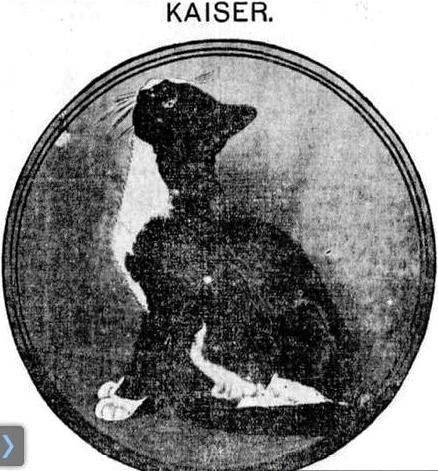
On January 9, 1912, just after 5 a.m., a small fire started in a rubbish can in the basement of the Equitable Life Building at 120 Broadway. Four hours later, when the fire was finally contained, the Equitable Life fire was one for the books in the annals of the Fire Department of New York (FDNY).
As I mentioned in Part I of this Old New York fire cat tale, sometime during the fire, William Giblin, the president of the Mercantile Deposit Company; a clerk (Mr. Campion); and a watchman (Mr. Sheehan) became trapped in the cellar while searching for important documents in a massive vault.
Unbeknownst to them and their would-be rescuers at the time, a black and white cat named Kaiser was also trapped somewhere in that basement.
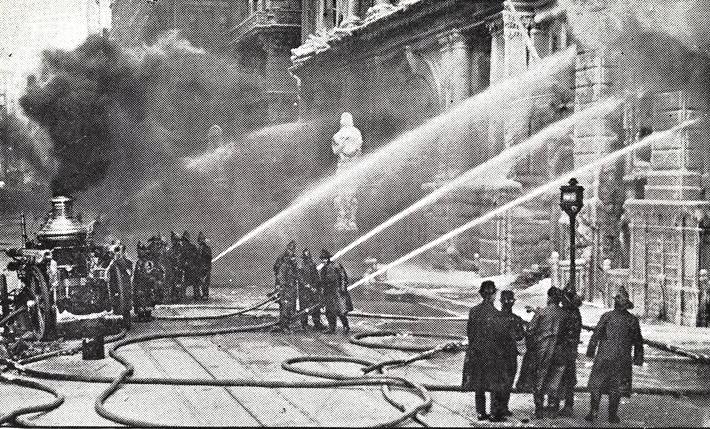
For almost two hours, Fireman Seneca Larke, Jr. of Engine Company No. 54 cut away at the two-inch steel bars in the basement windows with a hacksaw. As hundreds of gallons of water from the fire hoses poured down on Larke, freezing in the sub-zero temperatures as it fell, he worked frantically to get through the bars.
As he worked, Reverend McGean stood by to give Last Rites to the three men if the rescue efforts failed.
While the firemen continued to pour water into the basement, Kaiser the cat no doubt sought higher ground. I also imagine she was terrified – perhaps she even saw all of her nine lives flash before her eyes.
Giblin and Sheehan were eventually freed after about two hours. Sadly, Campion collapsed in Giblin’s arms just before the bars were cut away, and he succumbed to the icy cold conditions. Kaiser continued to hide.
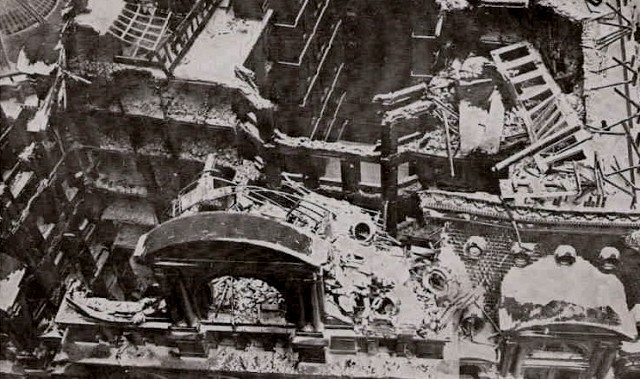
Kaiser Is Rescued and Adopted
On January 25, 16 days after the fire started, workmen who were trying to salvage the contents of the cellar vaults and safe boxes found a “sad wreck of a cat” in the front part of the lower floor. She was weak and hungry, and grateful for the warm saucer of milk and beef chop that they gave her.
For hours the men tried to lure Kaiser out of the building, but she wouldn’t budge from her charge. Even as one portion of the building after another collapsed or was demolished, she refused to leave. She simply moved from one corner to another until at last, there was nowhere left to hide.
Eventually, the men had to force her into a crate and carry her out of the building she had called home for the past five years.
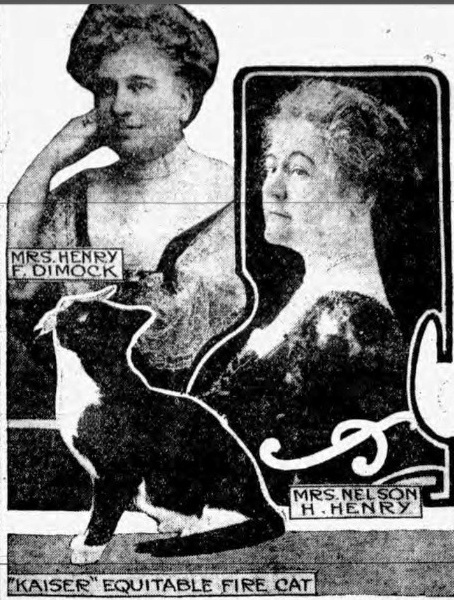
Miss Edna Blanchard Lewis, a pioneer female insurance broker (she was called “the only woman insurance broker in the world”) and former instructor at the New York Institution for the Instruction of the Deaf and Dumb, reportedly received permission to adopt the cat and take her home to Morningside Heights.
Kaiser’s brawny rescuers had tears in their eyes as they bade goodbye to their rescued feline friend.
Kaiser was taken to her new home at 480 West 119th Street, where she was given a bath and then brushed, petted, and hugged (not necessarily in that order). She was also given a new name: Kaiser the Faithful.
Over the next few years, Kaiser the Faithful enjoyed sunning herself in the window (this cat could take the heat!) and sleeping in her own roomy basket. She appeared as an “exhibition” at several shows, including the Woman’s Industrial Exhibition at the Grand Central Palace in March 1912 and 1914, and at the Empire Cat Club’s show of cats, held in conjunction with the Empire Poultry Association in December 1912.
Kaiser the Faithful’s Jeweled Collar

Miss Grace Hazen, a jeweler who taught in her studio at the National Arts Club in New York, presented Kaiser with a new bedazzled collar (pictured above) that featured a hammered silver design showing high buildings, clouds, and flames. The collar was inscribed: Faithful, Through Fire, Water, and Air. On the back was a cat’s eye jewel, and on each side was a topaz (a topaz also hung from the buckle). The silver plate was mounted on a soft gray leather collar.
I do not know how long Kaiser the Faithful continued to live in the lap of luxury, but I do know that her human mom was quite wealthy, so I’m sure she purred through the final years of her tenth life. Just 21 years after Miss Lewis came to Kaiser’s rescue, she died at the young age of 51 on December 25, 1933, in her apartment at the Hudson View Gardens on 183rd St. and Pinehurst Avenue in Washington Heights.
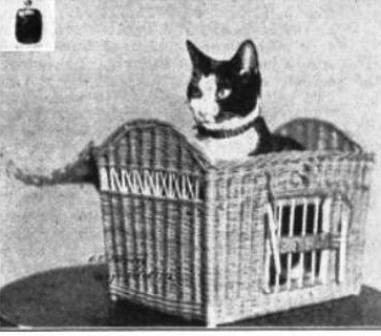
Another Furry Surprise
In the final part of this Old New York fire cat story, I’ll tell you about another animal that was rescued from the Equitable Building after spending over two weeks in a cage without food or water. And we’ll explore the history of the Equitable Building site, going back to 17th-century Dutch New Amsterdam.



